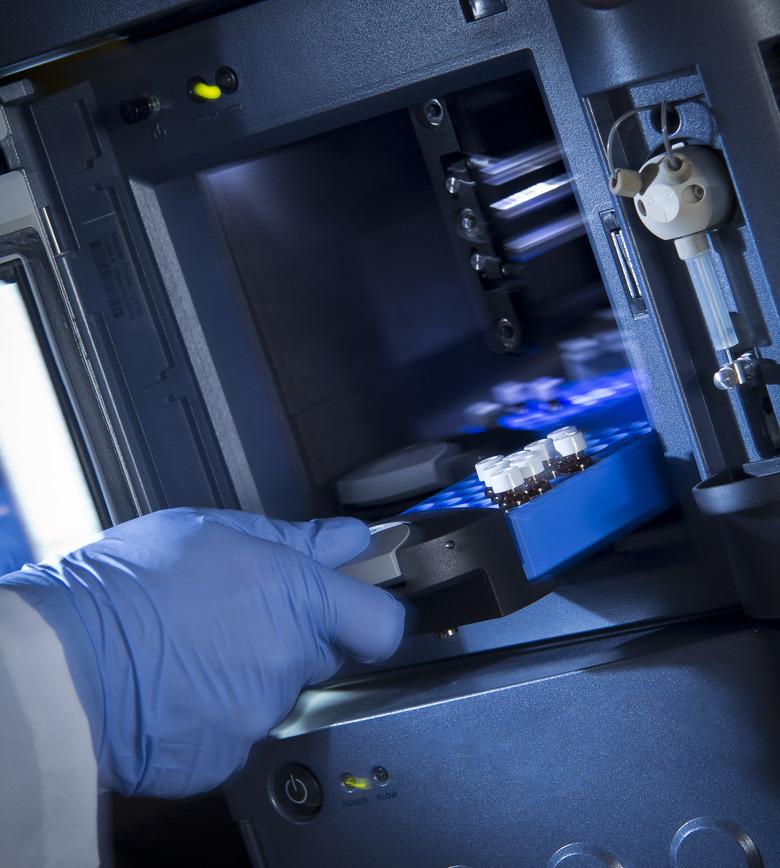How To Figure Out The Ionic Percentage Once You Get The Electronegativity Difference
When trying to figure out what kind of bond is made between two elements you are likely used to looking at the electronegativity. Based on the difference in electronegativity between the two elements, you can predict what kind of bond will form.
But, there is a slight problem with this. While bonds are often thought about in idealized terms as either ionic or covalent, this isn't really how it works in real life. Instead, most bonds have a percent ionic character.
What Is Percent Ionic Character?
What Is Percent Ionic Character?
There are two extremes to bonding which you are probably familiar with:
1. ionic bonding: complete transfer of an electron 2. covalent bonding: two atoms share electrons
Unless the two atoms are the same, two atoms do not perfectly share the electrons.
For example, O2 is a truly covalent bond. On the other hand the covalent bond between oxygen and hydrogen in water is not. Whichever element has a higher electronegativity (higher desire to hog the electrons) will actually pull the electrons closer to itself. Oxygen has a higher electronegativity and so has a partial negative charge. As a result there is some partial ionic character to the bond.
Electronegativity difference can, however, tell you something about about the percent ionic character of the bond. If the electronegativity difference between two atoms is high, there will be a more ionic character to the bond. If the electronegativity difference between the two atoms is low, there will be less ionic character to the bond.
Calculating Percent Ionic Character
Calculating Percent Ionic Character
In order to quantify how the charge is distributed within a bond, you can determine the dipole moment. The dipole moment is the physical property which determines how asymmetrically charge is distributed within a bond. It is defined as the product of the total amount positive charge or negative charge and the distance between the center of the charge distributions.
To calculate percent ionic character you will need to use the following equation:
\(percent\enspace ionic\enspace character=100\%\Biggl(\dfrac{\mu_{exp}}{\mu_{ionic}}\Biggr)\)
Here, μexp is the experimentally determined dipole moment, while μionic is the dipole moment if the bond was perfectly ionic.
μexp is experimentally determined and can be found in tables such as the one in the Reference Section. μionic must be calculated using the following formula:
\(\mu_{ionic}=Qr\)
Here, Q is the charge (or the charge of an electron), and r is the distance between the two atoms. This must also be determined experimentally.
Now, you can calculate the percent ionic character given the experimentally determined dipole moment and the dipole moment if the bond were perfectly ionic.
What about an estimation of the percent ionic character given difference in electronegativity?
Estimating Percent Ionic Character
Estimating Percent Ionic Character
After finding the percent ionic character as shown above, chemist Linus Pauling found an empirical relationship between the electronegativity difference and the percent ionic character. This relationship isn't perfect, but it does give a decent estimate of the percent ionic character.
Here is the equation:
\(percent\enspace ionic\enspace character=100\%\Biggl(1-e^{-(\Delta x/4)}\Biggr)\)
Here, Δx is the different in electronegativity between the two elements. For example, take a look at HCl. The electronegativity of Cs is 2.20, while for Cl it is 3.1. (You can look this up by using the periodic table in the resources section.) The difference is thus about 0.9. You can plug that in for Δx to find the percent ionic character:
\(percent\enspace ionic\enspace character=100\%\Biggl(1-e^{-(0.9)/4}\Biggr)\)
Completing the calculation gives you:
\(percent\enspace ionic\enspace character=100\%\Biggl(1-0.7985\Biggr)\)
So the the percent ionic character is:
\(percent\enspace ionic\enspace character=20\%\)
Thus, the bond between HCl has 20 percent ionic character. Table 5.4.1 in the first reference tells us that the actual percent ionic character is 17.7 percent, so this estimation based on the empirical relationship gives you a good estimate! Otherwise, you can use the experimentally observed dipole moment to calculate percent ionic character.
Cite This Article
MLA
Gupta, Riti. "How To Figure Out The Ionic Percentage Once You Get The Electronegativity Difference" sciencing.com, https://www.sciencing.com/figure-ionic-percentage-once-difference-8578423/. 23 February 2020.
APA
Gupta, Riti. (2020, February 23). How To Figure Out The Ionic Percentage Once You Get The Electronegativity Difference. sciencing.com. Retrieved from https://www.sciencing.com/figure-ionic-percentage-once-difference-8578423/
Chicago
Gupta, Riti. How To Figure Out The Ionic Percentage Once You Get The Electronegativity Difference last modified March 24, 2022. https://www.sciencing.com/figure-ionic-percentage-once-difference-8578423/
